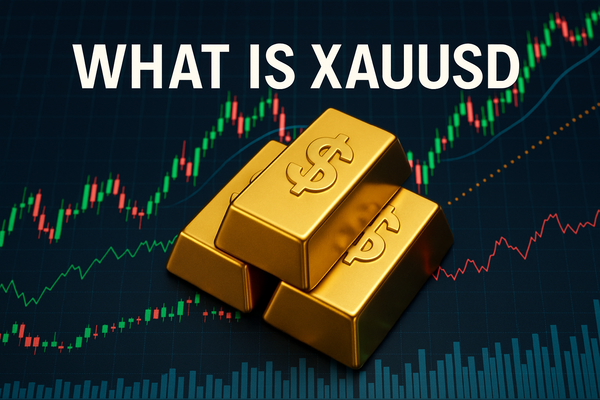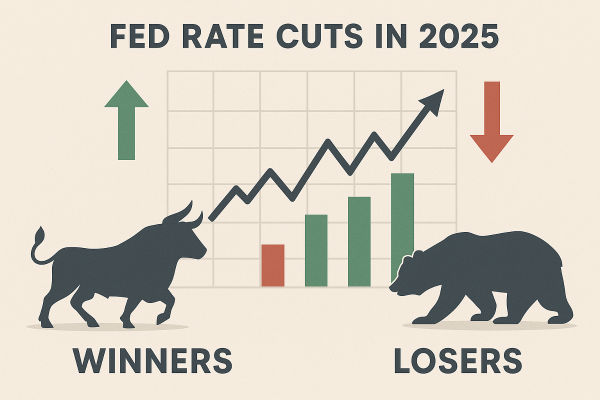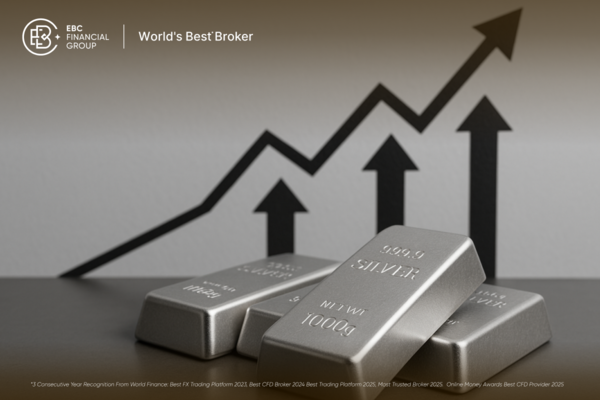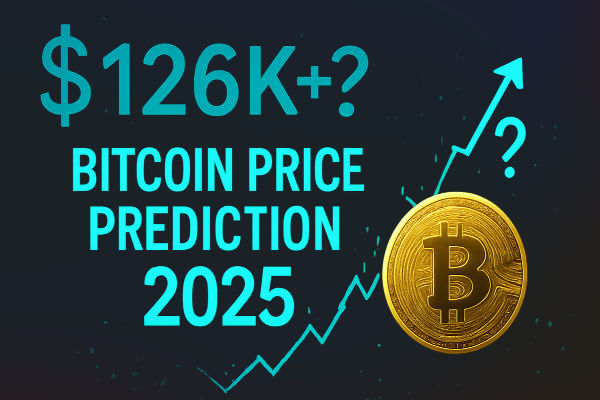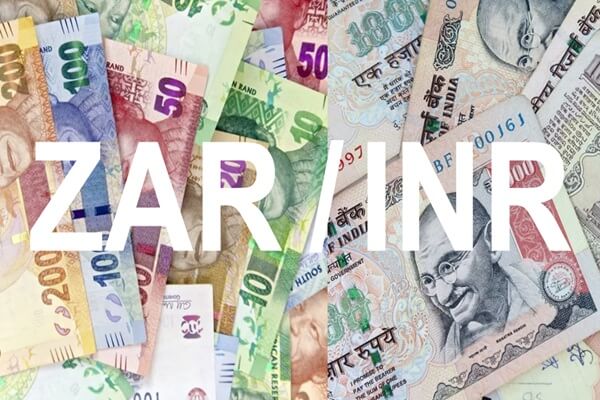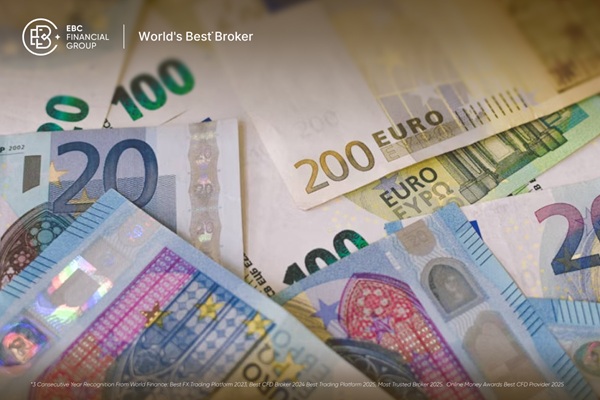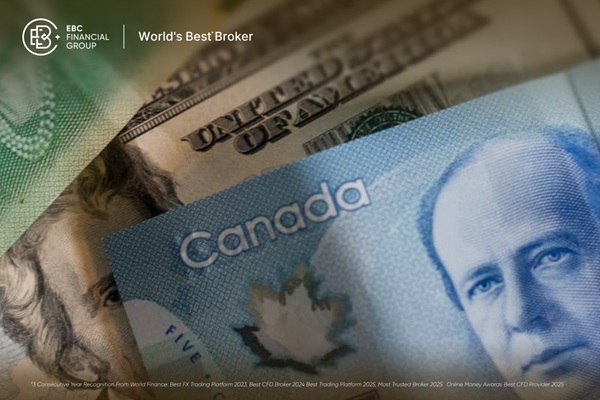Gold is often hailed as a hedge against inflation and a store of value in uncertain times. With headlines regularly proclaiming that gold has reached a new all-time high (ATH), many investors are left wondering: How much is gold really worth once you adjust for inflation?
Therefore, this article will explore gold's all-time high, how inflation affects its true value, historical trends of gold and inflation and what investors should consider when assessing gold's long-term performance.
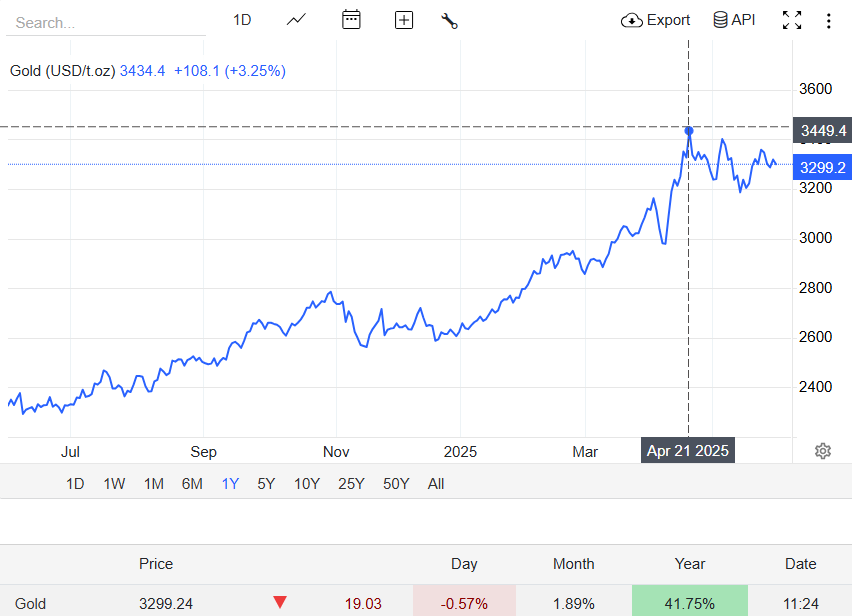
As of May 29, 2025, the price of gold stands at approximately $3,316.51 per ounce, marking a significant increase from previous years. In April 2025, gold reached an intraday high of $3,500.05 per ounce, setting a new nominal record.
This surge is attributed to factors such as economic uncertainty, inflation fears, and increased demand from central banks.
Adjusting for Inflation: The Real Value of Gold
While nominal prices provide a snapshot, adjusting for inflation offers a more accurate picture of gold's value over time. In 1980, gold peaked at $850 per ounce, which, when adjusted for inflation, equates to approximately $3,493 in today's dollars.
Therefore, the recent highs in 2025 have just surpassed the inflation-adjusted peak from 1980, indicating a new real record.
Historical Trend of Gold vs Inflation
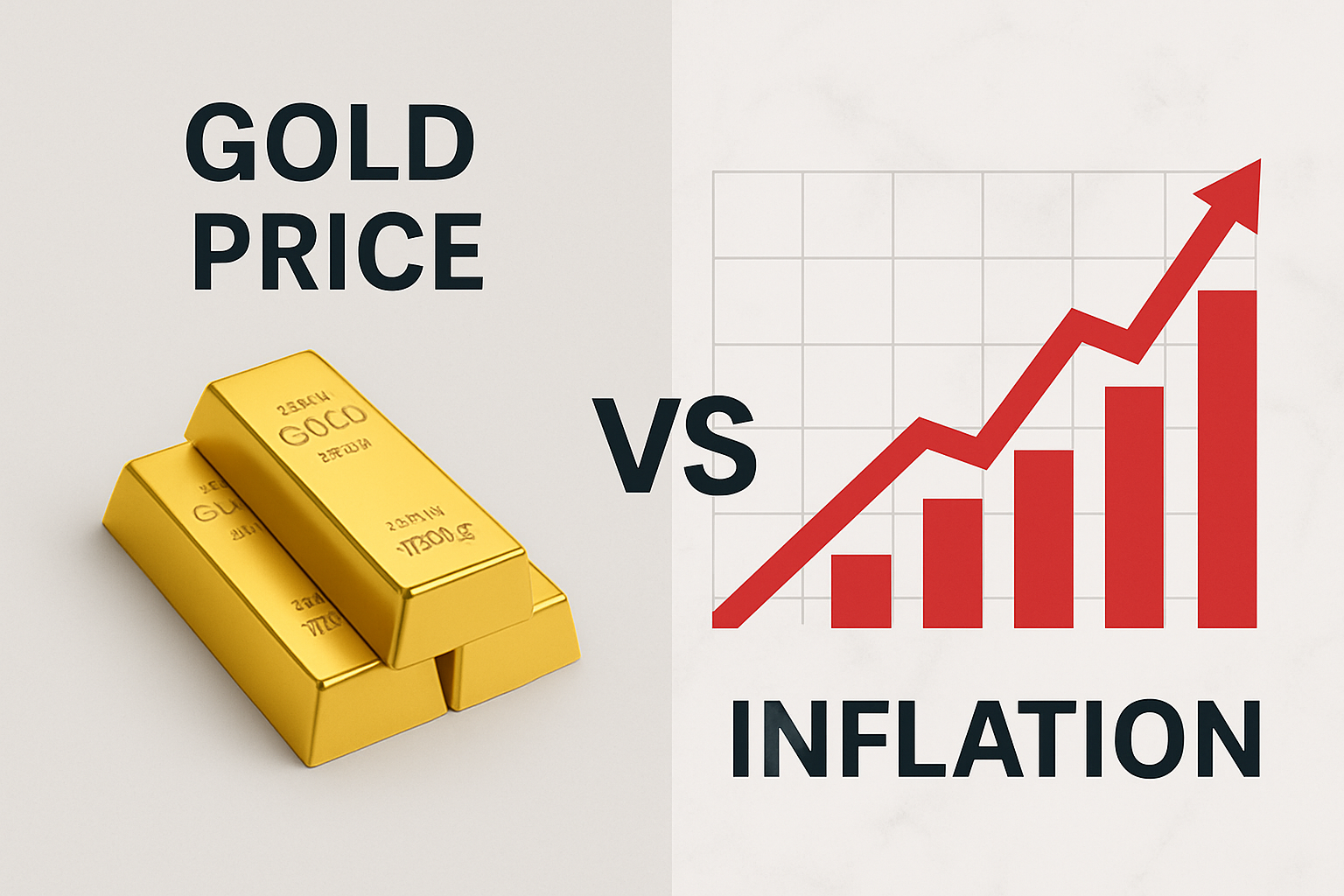
1. The 1970s: Gold as a Classic Inflation Hedge
The 1970s is one of the most well-documented periods where gold showcased its reputation as a premier hedge against inflation. During this decade, the US faced stagflation — a combination of high inflation, rising unemployment, and stagnant economic growth. Key events included:
The collapse of the Bretton Woods system in 1971 ended the gold standard.
The oil crisis in 1973 and 1979, which spiked energy prices.
Double-digit inflation rates — peaking at 13.5% in 1980.
During this period, gold prices surged from around $35 per ounce in 1971 to $850 per ounce in January 1980, a more than 2,300% increase. The dramatic rise was largely driven by investor demand for a safe haven amid surging consumer prices and currency instability.
2. The 1980s–1990s: The Disinflation Era
After inflation was brought under control by aggressive interest rate hikes from then-Federal Reserve Chair Paul Volcker, the US entered a period of relatively low inflation. During the 1980s and 1990s:
Inflation averaged around 3–4% annually.
Economic growth was strong, fueled by globalisation and technological innovation.
Central banks were net sellers of gold during this time.
As a result, gold prices declined and then stagnated, falling from the 1980 highs of $850 to under $300 per ounce by the late 1990s. Investors shifted their focus toward equities, particularly tech stocks, which offered higher returns in a low-inflation environment.
3. 2000s: Gold's Comeback Amid Economic Turmoil
In the early 2000s, gold began to regain favour due to several compounding factors:
The bursting of the dot-com bubble in 2000.
The 9/11 attacks in 2001, which heightened geopolitical risks.
Loose monetary policy and historically low interest rates.
The 2008 Global Financial Crisis sparked fears of systemic collapse.
Gold prices surged from around $275 in 2001 to a peak of $1,900 in 2011, fueled by both economic uncertainty and a weakening US dollar. This decade reaffirmed gold's safe-haven appeal during periods of financial distress and growing national debt.
4. 2011–2018: Post-Crisis Stabilisation
Following its 2011 high, gold entered a multi-year bear market due to:
Stabilising global economies.
The end of quantitative easing (QE) by the Federal Reserve.
Rising interest rates and a strong US dollar.
Gold prices dropped to about $1,050 per ounce in late 2015 before slowly recovering. During this period, inflation remained subdued, and investor appetite leaned toward equities.
5. 2019–2021: The Pandemic Spike
The COVID-19 pandemic reignited gold's rally:
Global central banks slashed interest rates to near zero.
Trillions of fiscal stimulus were injected into economies.
Inflation began to rise sharply by mid-2021.
Gold surged to a new nominal record of over $2,070 per ounce in August 2020. Even though inflation hadn't peaked yet, investor anticipation of currency debasement and financial instability pushed gold higher.
6. 2022–2023: Inflation Peaks, Rate Hikes Begin
By 2022, inflation in the US reached a 40-year high, peaking at over 9% in June. In response, the Federal Reserve began an aggressive rate-hiking campaign:
By 2023, interest rates were raised above 5%.
This strengthened the US dollar and increased yields on bonds, pressuring non-yielding assets like gold.
Gold remained resilient but didn't break new highs, fluctuating between $1,800 and $2,000 per ounce for most of 2022 and 2023, as investors balanced fears against robust monetary policy.
7. 2024–2025: Gold Breaks New Ground
In early 2024, gold began a new ascent, driven by:
Renewed geopolitical tensions (e.g., in Eastern Europe and the Middle East).
Fears of economic slowdown in China and parts of Europe.
Persistent core inflation despite falling headline CPI figures.
Continued accumulation by central banks, especially in the brics nations.
By April 2025, gold hit a record high of $3,500.05 per ounce, breaking both nominal and real (inflation-adjusted) highs for the first time since 1980.
Gold Global Demand in 2025

In 2025, global demand for gold has surged. The World Gold Council reports a 13% year-over-year increase in demand for gold bars in the first quarter of 2025, reaching 257 metric tons.
Central banks, particularly in emerging markets, have been significant buyers, seeking to diversify reserves and hedge against currency volatility. This institutional demand has provided strong support for gold prices.
Gold Investment Strategies: ETFs and Gold Mining Stocks
For investors looking to gain exposure to gold, exchange-traded funds (ETFs) offer a convenient option. Notable gold-focused ETFs include:
SPDR Gold Shares (GLD): Currently trading at $305.61, GLD is one of the largest and most liquid gold ETFs.
iShares Gold Trust (IAU): With a price of $62.54, IAU offers a lower expense ratio, attractive to cost-conscious investors.
VanEck Gold Miners ETF (GDX): Trading at $50.28, GDX provides exposure to gold mining companies, which can offer leveraged returns.
These ETFs allow investors to participate in gold's performance without the complexities of physical ownership.
Conclusion
In conclusion, gold's recent performance, both in nominal and inflation-adjusted terms, reaffirms its status as a valuable asset during economic turbulence. Surpassing previous real highs indicates strong investor confidence in gold's role as a hedge against inflation and currency devaluation.
While future price movements will depend on various macroeconomic factors, gold remains a critical component of a diversified investment portfolio.
Disclaimer: This material is for general information purposes only and is not intended as (and should not be considered to be) financial, investment or other advice on which reliance should be placed. No opinion given in the material constitutes a recommendation by EBC or the author that any particular investment, security, transaction or investment strategy is suitable for any specific person.








